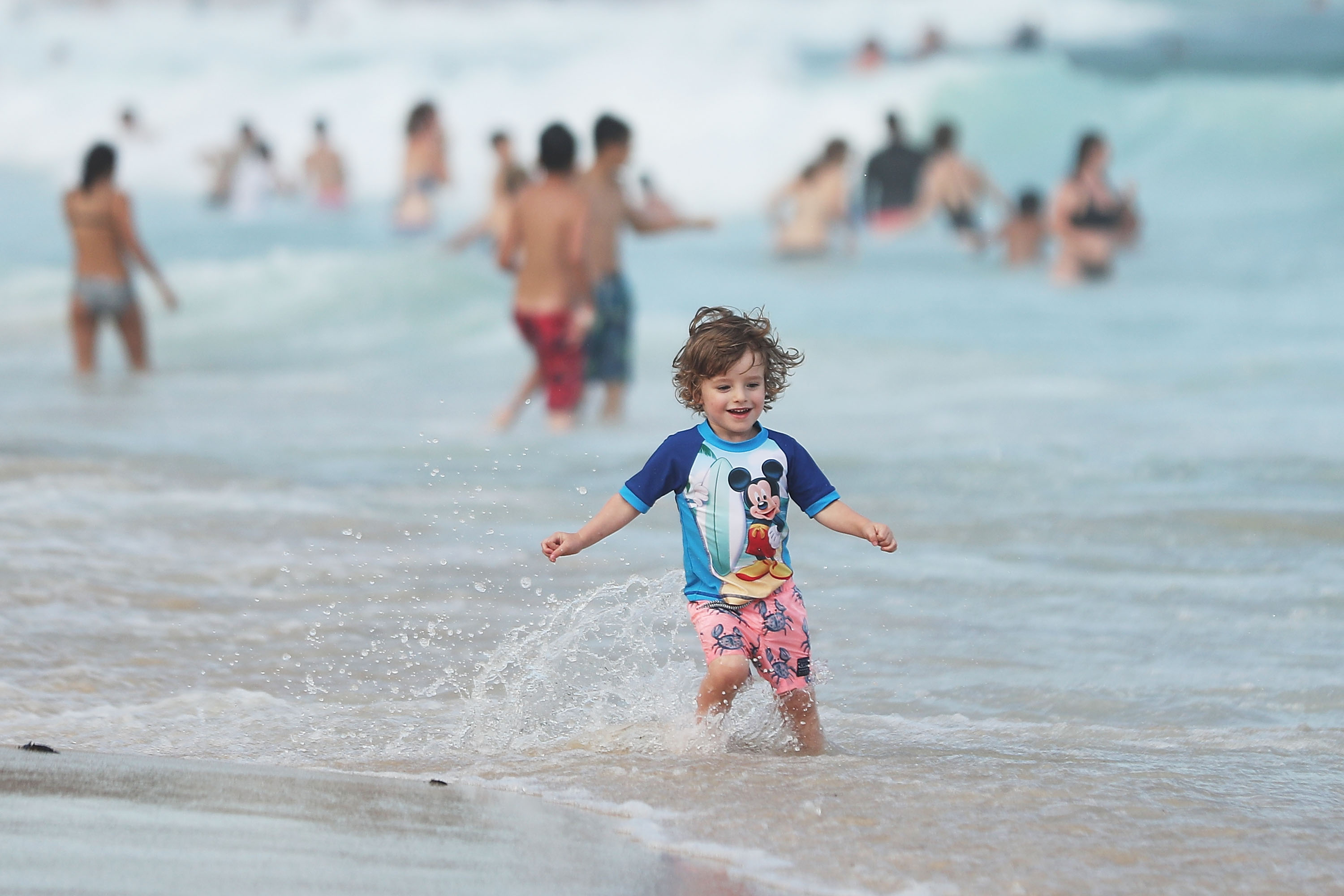Getting just two blistering sunburns in childhood doubles the risk of getting the most dangerous skin cancer later in life. Dermatologist Bianca Tod explains what makes young children’s skins sensitive and how to make sure they are protected from the sun.
Are babies and toddlers more vulnerable to sunburn than adults? If so, why?
Yes, they are. Extra care needs to be taken to protect them from the damaging effects of the sun. This is due to the direct effect of sun on their skin and the dangers of overheating.
The skin of infants and children is anatomically thinner and provides a less robust barrier than that of adults. This makes it more delicate and sensitive.
Children are more likely to dehydrate or develop heat stroke, because their thermoregulation (ability to control body temperature) is less efficient than that of adults.
What are some of the long-term consequences?
There is clear evidence that sun exposure in childhood is associated with an increased risk of skin cancer later in life. Melanoma, the most dangerous skin cancer, is associated with a history of childhood sunburns. Getting badly sunburnt just twice doubles the risk.
Basal cell skin cancer, which is the most common skin malignancy, is also associated with childhood and adolescent sun exposure.
Sun exposure, specifically ultraviolet light exposure, causes very specific patterns of DNA damage. A large proportion of skin cancers show sun mutational signatures. This tells us that sun exposure directly caused mutations that led to or promoted the skin cancer.
If you start to get these mutations early in life, you have a longer period to accumulate more, and for them to overwhelm your body’s protective mechanisms.
How can parents keep their children safe?
We must make sure that children can enjoy outdoor activities safely. Some ways of doing this are:
- avoiding direct sun exposure in infants, particularly before 6 months
- teaching kids about sun safety and how to look after their own skins
- avoiding exposure in the middle of the day (between 10am and 4pm).
For greater accuracy, check the UV index on your weather app as there is seasonal variation. The values of the index range from zero upward: the higher the ultraviolet index, the greater the potential for damage to the skin and eyes.
As a guide, levels of 3 or more indicate the need for sun protection. When levels are 8 or more you should avoid being outside if possible. If you are, then you should be practising strict sun protection, and limit the time you spend outside.
- covering up: dress your children in clothing that offers good coverage, like long sleeves. Clothing with a UPF (ultraviolet protection factor) is great, but as it ages it loses some of its protective capabilities.
Normal clothing also gives protection, particularly darker dyed clothing, and densely woven fabrics. Wear hats and good quality sunglasses. Protecting your child from ultraviolet damage now will decrease the potential for serious eye problems later in life.
- applying sunscreen: the areas that can’t be covered with clothing should be covered with sunscreen, ideally with a sun protection factor (SPF) of 50. This must be reapplied frequently and in adequate amounts. Choose a mineral sunscreen or a sunscreen formulated for babies. Because infants’ skin is very sensitive and easily irritated, and absorbs chemical products more, try to focus on covering up and avoiding the sun.
- seeking shade.
- watching for overheating and dehydration: make sure that your child does not overheat or become dehydrated. Young children are especially susceptible to dehydration. Remember that if you are using shade covers over your child’s pram, you must make sure it’s adequately ventilated, and that the temperature inside the pram is not too high.
What about vitamin D? Don’t children need some sun?
This is a controversial topic.
We get vitamin D from sun exposure as well as from foods such as oily fish, egg yolk, and fortified foods like fat spreads.
Most dermatologists advise against the concept of sun exposure for getting vitamin D. In most cases, incidental sun exposure in combination with a balanced diet of food rich in vitamin D is adequate for our needs.
Vitamin D is a critical micro-nutrient, particularly in childhood. Deficiency is associated with rickets and a number of other conditions. Some children may be at greater risk of vitamin D deficiency, such as children
with restricted diets, those who spend most of their time indoors or those who have darker skin types. These factors may be compounded by living in geographical locations further from the equator, in the winter months in particular. If you are worried about vitamin D levels in your child, the only way to be sure is to do a blood test.
You can give your child supplements but just watch the dosage, as it is possible to overdose on vitamin D. When in doubt, it’s best to ask your doctor.
What are the signs of sunburn in a child?
Sunburn in lighter skin will show redness, swelling, heat and, if it’s severe, blisters.
In darker skin types, it can be more difficult to detect. You may observe the skin feels hot, sensitive or even painful. Itchiness and flaking may also occur, but usually as late signs.
Read more: Children can be more vulnerable in the heat. Here’s how to protect them this summer
Besides the long-term concerns, in the short term you would be concerned about heat stroke and dehydration, particularly in infants. Your baby may become fussy, thirsty, not produce as much urine as usual and show other signs of dehydration.
Sunburn should be avoided at all costs.
Mild sunburn can be treated with cool compresses, oral fluids and paracetamol or ibuprofen syrup. Moderate and severe sunburns may justify a doctor’s visit and even require hospital admission.
This story was first published in The Conversation. Bianca Tod is a Dermatologist and lecturer at Stellenbosch University.




